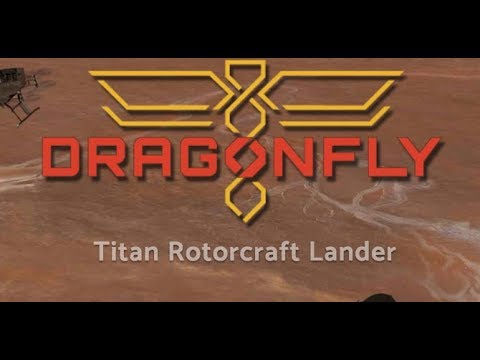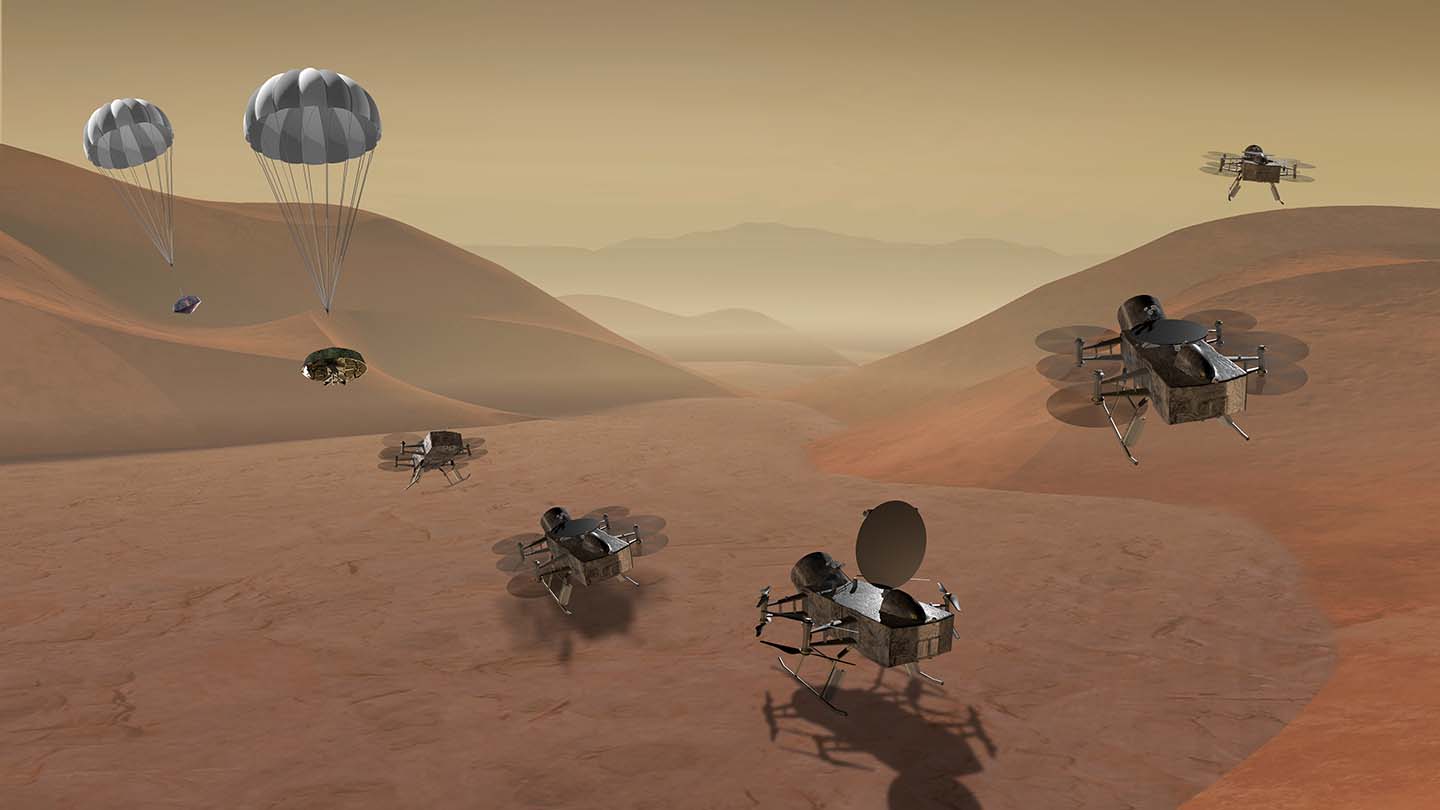Press Release
NASA Selects Johns Hopkins APL-Led Mission to Titan for Further Development
Thu, 12/21/2017 - 09:46
A Johns Hopkins Applied Physics Laboratory (APL) proposal for an innovative, highly instrumented rotorcraft that would investigate prebiotic organic chemistry and habitability on Saturn’s largest moon has been selected by NASA as one of two finalists for the agency’s next New Frontiers mission.
Dragonfly is a dual-quadcopter lander that would take advantage of the environment on Titan to fly to multiple locations, some hundreds of miles apart, to sample materials and determine surface composition. The four science instruments on the vehicle would investigate Titan’s organic chemistry and habitability, monitor atmospheric and surface conditions, image landforms to investigate geological processes, and perform seismic studies.
“Titan is a fascinating ocean world,” said APL’s Elizabeth Turtle, principal investigator for Dragonfly. “It’s the only moon in the solar system with a dense atmosphere, weather, clouds, rain, and liquid lakes and seas — and those liquids are ethane and methane. There’s so much amazing science and discovery to be done on Titan, and the entire Dragonfly team and our partners are thrilled to begin the next phase of concept development.”
The ability to fly would allow Dragonfly to navigate the Titan environment to explore a variety of surface sites. Titan’s dense atmosphere — four times denser than Earth, with gravity one-seventh as high — make flight on Titan easier than on Earth. Since the atmosphere is dense and hazy, making solar panels less effective, Dragonfly would use a Multi-Mission Radioisotope Thermoelectric Generator (MMRTG), like the Curiosity rover on Mars, to power its systems.
Learn more about the proposed Dragonfly mission.
“This brings us one step closer to launching a bold and very exciting space exploration mission to Titan,” said APL Director Ralph Semmel. “We are grateful for the opportunity to further develop our New Frontiers proposals and excited about the impact these NASA missions will have for the world.”

